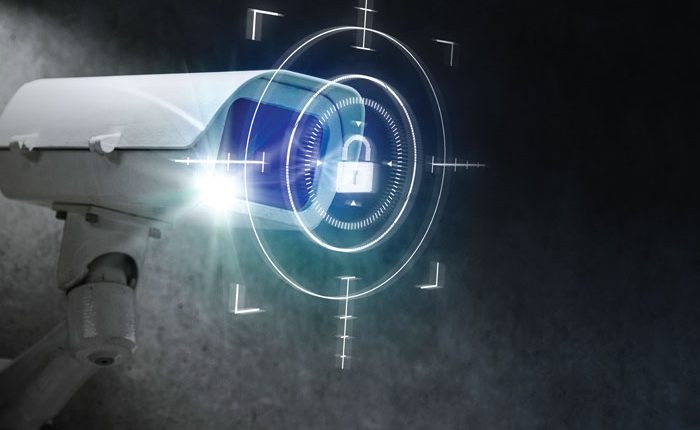In today’s dynamic and ever-changing world, the importance of security cannot be overstated. With the rise of technological advancements, traditional security measures are being complemented and sometimes replaced by more sophisticated solutions. Among these, Closed-Circuit Television (CCTV) surveillance systems have emerged as a cornerstone in modern security infrastructure, offering unparalleled capabilities in monitoring, detection, and deterrence.
CCTV surveillance systems have come a long way since their inception, evolving from bulky, analog cameras to sleek, high-definition digital systems equipped with advanced features such as motion detection, facial recognition, and remote monitoring. This evolution has revolutionized the way we perceive and implement security, enabling organizations and individuals to proactively identify and mitigate potential threats.
Primary Advantages
One of the primary advantages of CCTV surveillance systems is their ability to provide round-the-clock monitoring. Unlike human security personnel, CCTV cameras can operate tirelessly, ensuring continuous surveillance of critical areas without fatigue or distraction. This constant vigilance is particularly valuable in high-risk environments such as banks, airports, and government facilities, where any lapse in security could have serious consequences.
Moreover, CCTV surveillance systems act as a powerful deterrent against criminal activity. The presence of cameras serves as a visible reminder to would-be intruders that they are being watched, significantly reducing the likelihood of unauthorized access or illicit behavior. In cases where incidents do occur, CCTV footage serves as invaluable evidence for investigations and legal proceedings, aiding law enforcement agencies in identifying perpetrators and prosecuting them effectively.
The Efficacy of CCTV Surveillance Systems
However, the efficacy of CCTV surveillance systems goes beyond mere deterrence and evidence collection. Thanks to advancements in artificial intelligence and machine learning, modern systems are capable of intelligent video analytics, enabling them to detect and respond to suspicious activities in real-time. Whether it’s detecting unauthorized intrusions, identifying suspicious packages, or alerting authorities to potential security breaches, AI-powered CCTV systems provide an added layer of proactive security that can make all the difference in preventing security incidents before they escalate.
Furthermore, the integration of CCTV surveillance systems with other security technologies, such as access control systems and alarm systems, enhances overall security effectiveness. By synchronizing data and sharing alerts across different platforms, organizations can create a comprehensive security ecosystem that is greater than the sum of its parts. This integrated approach not only improves response times but also facilitates more informed decision-making, empowering security personnel to take preemptive action based on real-time insights.
Of course, as with any technology, the deployment of CCTV surveillance systems raises important considerations regarding privacy and data protection. It is essential for organizations to implement robust protocols for the ethical and responsible use of surveillance technologies, ensuring that they comply with relevant regulations and respect individuals’ rights to privacy. Transparency, accountability, and clear communication are key principles that should underpin any surveillance strategy, helping to build trust and mitigate concerns among stakeholders.
Trends and Availability of Sophisticated Systems
Here are some key points regarding the trends and availability of sophisticated CCTV surveillance systems in India:
Growing Demand: There has been a significant increase in demand for CCTV surveillance systems across various sectors in India, including government, commercial, residential, and industrial sectors. This demand is primarily fueled by the need for better security measures and the growing awareness of the benefits of surveillance systems.
Technological Advancements: The CCTV surveillance industry in India has witnessed significant technological advancements. These include high-definition (HD) and ultra-high-definition (UHD) cameras, advanced video analytics, cloud-based storage solutions, remote monitoring capabilities, and integration with other security systems such as access control and alarm systems.
Internet of Things (IoT) Integration: Integration of CCTV surveillance systems with IoT technology is becoming increasingly common. IoT-enabled cameras can provide additional functionalities such as real-time alerts, predictive analytics, and automation of surveillance tasks.
Government Initiatives: The Indian government has been actively promoting the use of CCTV surveillance systems for enhancing security in public places, transportation hubs, government buildings, and smart cities. Initiatives such as the Safe City Project have led to the deployment of advanced surveillance systems in several cities across the country.
Availability: There is a wide range of CCTV surveillance systems available in the Indian market, catering to different requirements and budgets. Both domestic and international manufacturers offer a variety of products, ranging from basic standalone cameras to comprehensive surveillance solutions with advanced features.
Integration with AI and Machine Learning: Artificial intelligence (AI) and machine learning (ML) technologies are being increasingly integrated into CCTV surveillance systems in India. These technologies enable features such as facial recognition, object detection, behavior analysis, and anomaly detection, enhancing the effectiveness and efficiency of surveillance operations.
Data Privacy and Regulation: With the increasing deployment of CCTV surveillance systems, concerns about data privacy and regulation have also risen. The Indian government has been working on formulating regulations and guidelines to address these concerns and ensure that the deployment and use of surveillance systems comply with privacy laws.
Overall, the trend towards the adoption of sophisticated CCTV surveillance systems in India is expected to continue, driven by technological advancements, increasing security concerns, government initiatives, and the growing availability of advanced solutions in the market.
Conclusion
CCTV surveillance systems represent a pivotal advancement in the field of security, offering unparalleled capabilities in monitoring, detection, and deterrence. By harnessing the power of technology, organizations can enhance their ability to safeguard people, property, and assets against a wide range of threats. However, it is crucial to approach the deployment of CCTV systems with careful consideration for ethical, legal, and privacy implications, ensuring that they are used responsibly and in the service of greater safety and security for all.


